#janelias
Text
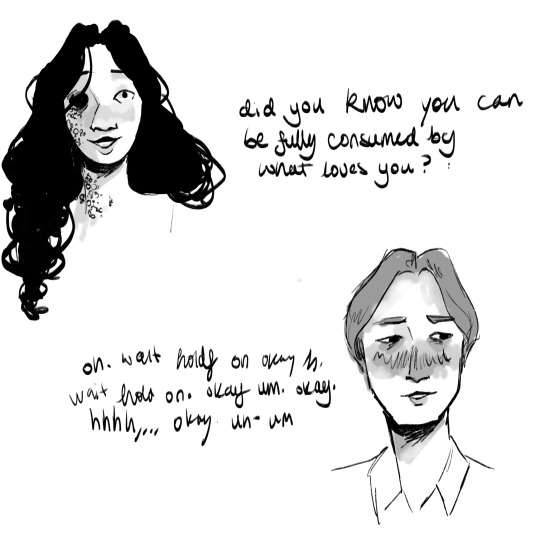



@thermodynamic-comedian have my janelias sketches
33 notes
·
View notes
Text
being flirted with would not fluster jonah magnus and having someone confess their love to him would not fluster jonah magnus but weird fear entity avatar stuff absolutely would. and does. you could pull the smoothest pick-up lines on him and he would not care but jane prentiss pulls up to his office like "did you know that you can be fully consumed by what loves you." and he's like "oh. wait holdf on okay h. wait hold on. okay. um . okay. hhhh,,, okay. uh- um."
#avatars just say the weirdest creepiest shit in his vicinity and he just goes bright red and has to take a second#scary fear entity stuff is just his love language#tma#the magnus archives#tma shitpost#janelias#elias bouchard#jonah magnus#jane prentiss
180 notes
·
View notes
Text
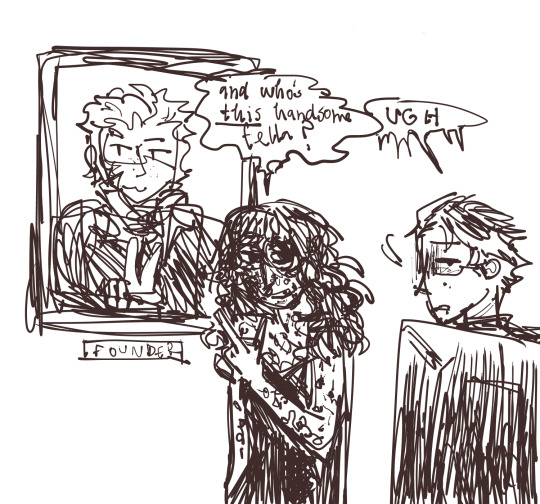
first contribution to the janelias fandom...... next is gonna be georgian era jane
@thermodynamic-comedian i'll do more, neater art soon :]
#my art#fanart#doodle#tma#tma fanart#the magnus archives#jonah magnus#elias bouchard#jane prentiss#janelias
69 notes
·
View notes
Text
we are both insane but that's ok cause it cancels each other out. i am dancing with no one in the kitchen while you're humming to an empty bird feeder in the garden. will you think of me when i'm gone? will my voice still echo through the ivy clustered windows of our house? will you slow dance to my tune, no longer alone, in the arms of someone else? you are someone i can never have. i am someone you can never have.
#this is janelias btw#janelias#tma#the magnus archives#rambles#cult rambles#deranged ships!!#jane prentiss#elias bouchard
23 notes
·
View notes
Text
New Fic! "Just My Type"
Hello gay people in my computer. have you ever thought about kissing a woman made of worms? would you like to?
I wrote this as my part of an art trade with the lovely @oh-shit-i-spilled-my-genderfluid, and i had a great time! Jane/Elias is definitely a very new ship to me but their voices were so compelling that the fic ended up several hundred words longer than i intended, so enjoy that
check it out here :)
#someday i need to get a consistent format for these posts#not today though#flicker writes#flick says things#the magnus archives#elias bouchard#jonah magnus#jane prentiss#magnus archives fic#janelias#parasight
15 notes
·
View notes
Text
i didnt know janelias was a thing but its so fucking funny i love them
#parasight#janelias#what do i do with them#what are they#crackships my beloved#i want to stab them /pos
2 notes
·
View notes
Text

______Janelia Mould
219 notes
·
View notes
Photo
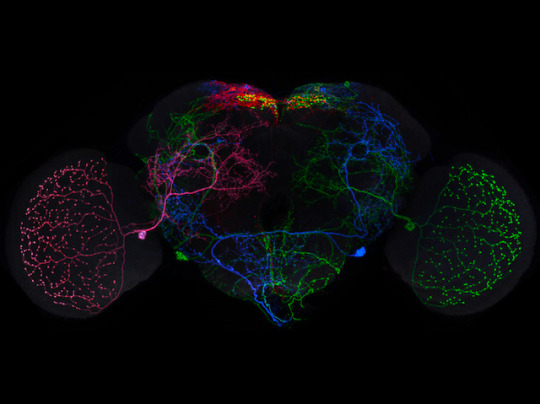
GAL Pals
Scientists often turn to the fruit fly Drosophila for its relatively simple (yet similar) tissues to our own. But peering into its brain is still mind-boggling. Over 8 years, researchers at The Flylight Project captured thousands of images of fly brains, while developing a genetic tool to tease these neuron tangles apart. By genetically modifying the flies’ DNA, they watch as specific enhancers help to switch on a gene called GAL4, lighting up each neuron with a random or stochastic combination of colourful fluorescence. Comparing these patterns in different cells allows the team to specifically label individual neurons (seen here in rainbow colours) – their branching forms revealing circuits within and between brain regions. The results of this painstaking work, involving 5000 different strains of fly, is now available as a public resource, aiding geneticists and brain researchers around the world.
Written by John Ankers
Image from work by Geoffrey Wilson Meissner and colleagues
Janelia Research Campus, Ashburn, VA, USA
Image originally published with a Creative Commons Attribution 4.0 International (CC BY 4.0)
Published in eLife, February 2023
You can also follow BPoD on Instagram, Twitter and Facebook
#science#biomedicine#flies#neuroscience#drosophila#brain#neurons#genes#immunofluorescence#fluorescent tags#flylight#janelia#public resource#genetics
32 notes
·
View notes
Text
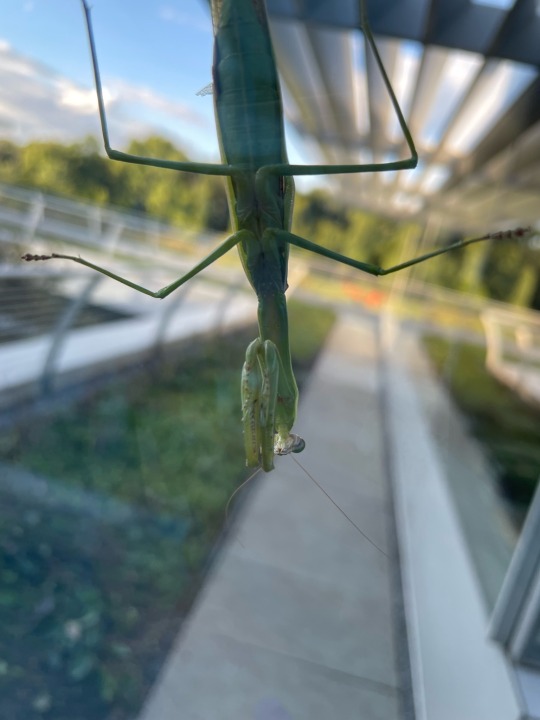
Hi hooman, Can I has some of them tasty Gr64f-Gal4/20xUAS CsChrimson flies you are hold?
1 note
·
View note
Text
oh i just realized it's been far too long (like a few days) since i've made a parasight post.
imagine they're like. just casually making out in elias' office when some random employee walks in. cue immediate psychic eye attack so strong the employee just passes out and wakes up in the break room a few hours later like "i had. the most fucked up dream. i should call my therapist"
116 notes
·
View notes
Photo
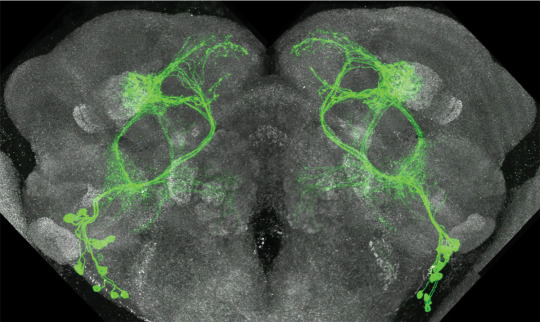
Fighting fruit flies help researchers understand why we stay angry | Janelia Research Campus
0 notes
Quote
new research suggests persistent aggression could be regulated by other factors, including neuromodulators affecting neuronal activity, neurons downstream from the aggression-associated cells, or other circuits in the fly brain. Considering their findings, scientists may need to develop a new model that considers these other factors in addition to recurrent connections to explain this enduring behavior.
“It is interesting for the field because we talk about these recurrent connections as being key for the persistent state, and that’s really what we thought,” says Katie Schretter, a postdoc in the Rubin Lab who led the research. “But now it seems less clear in this case.”
Understanding persistent internal states like aggression could help researchers better uncover how the brain makes decisions – for instance, whether to stay mad or move on – and the individual circuits involved in these choices. Figuring out the underlying mechanisms behind aggression could also help scientists better understand aggressive behavior in humans, including behaviors that can occur alongside neurodegenerative or psychiatric diseases.
“For our society, it’s important to be able to decrease aggression and figure out how to stop persistent aggression,” Schretter says. “Figuring out how the circuit works can help us figure out how we might decrease it.”
Fighting fruit flies help researchers understand why we stay angry | Janelia Research Campus
0 notes
Text
Study Support Technician - Aquatics
HHMI Janelia Research Campus
See the full job description on jobRxiv: https://jobrxiv.org/job/study-support-technician-aquatics-2/?feed_id=66440
#ScienceJobs #hiring #research
Ashburn #UnitedStatesUS #ResearchAssistant #ResearchTechnician #Researcher
0 notes
Text
¿Cómo se comunican las ratas en relación a los medios de comunicación y tecnología?
La comunicación de las ratas, que incluye señales químicas, vocalizaciones y sustancias olorosas, puede relacionarse con la comunicación humana ya que según el comunicado de prensa de la AAAS (ASOCIACIÓN ESTADOUNIDENSE PARA EL AVANCE DE LA CIENCIA) se ha demostrado que las ratas, en especial las heterocephalus glaber, tienen dialectos distintivos y únicos transmitidos culturalmente a través de generaciones, lo que sugiere una complejidad en su comunicación similar a los seres humanos.
La principal estrategia de comunicación en las ratas son señales químicas, que se pueden interpretar como marcas de olor depositadas en su entorno que contienen feromonas para comunicarse de manera particular. Adicionalmente según la revista El Confidencial se ha realizado un estudio en el grupo de científicos del HHMI's Janelia Research Campus que ha revelado que los roedores son capaces de imaginar objetos y escenarios, lo que propone la presencia de capacidades cognitivas.

(Imagen tomada de Canva, realizada por 1Tamara2) Imagen de heterocephalus glaber o rata topo desnuda, Natruraleza y Naturaleda. De uso gratuito.
Análogamente, la evolución de los medios de comunicación en humanos ha pasado de métodos más rudimentarios, como la escritura, a formas más complejas, como la radio, la televisión y la internet. Ambos casos destacan la importancia de la comunicación para la supervivencia y la transmisión de información. La tecnología, al igual que los métodos de supervivencia de las ratas, ha evolucionado para ser más sofisticada y eficiente, conectando a las sociedades de maneras antes inimaginables.
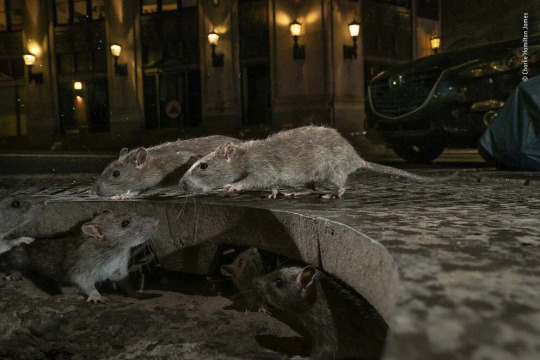
Ratas en la acera. Calle Pearl, Nueva York (Premio Foto Wildlife)
Gracias a las similitudes comunicativas y biológicas que tenemos los seres humanos con las ratas, según El Espectador, hemos logrado avanzar en la investigación de enfermedades neuro psiquiátricas y neurodegenerativas, realizándole a las ratas trasplantes de neuronas humanas para ver la interacción de los neurotransmisores e identificar implicaciones en el desarrollo de tratamientos y terapias para enfermedades del cerebro humano. La comparación de los genomas del ratón y del humano ha sido clave para el estudio de enfermedades, ya que ratones y humanos comparten aproximadamente el 70% de las secuencias genéticas que producen proteínas, lo que ha permitido la instrumentalización de estas especies como una herramienta para solventar situaciones problemáticas, lo mismo que ocurre con la tecnología.

Los investigadores han trasplantado un organoide de cerebro humano (verde brillante) en el cerebro de una cría de rata recién nacida, creando un cerebro híbrido en el que las neuronas interactúan.
Foto: Stanford University
0 notes
Text

Learning from Memory
New genetic tools for greater understanding of the complexity of how memories influence behaviours at the neuronal level in the fruit fly model organism
Read the published research article here
Image from work by Gerald M Rubin and Yoshinori Aso
Janelia Research Campus, Howard Hughes Medical Institute, Ashburn, VA, USA
Image originally published with a Creative Commons Attribution 4.0 International (CC BY 4.0)
Published in eLife, January 2024
You can also follow BPoD on Instagram, Twitter and Facebook
15 notes
·
View notes